Author: Ken Christopher | 16 min read | Oct 20, 2021
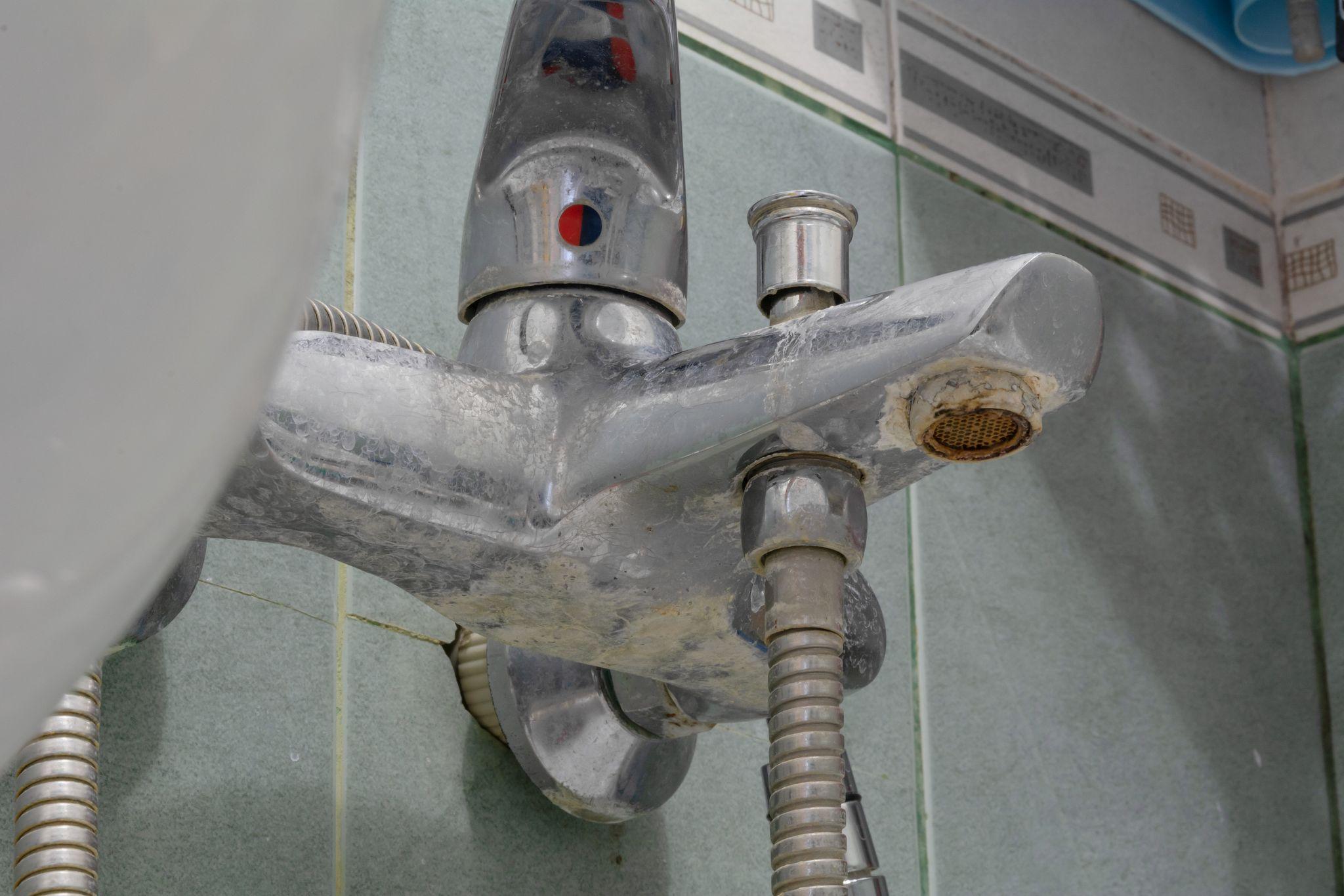
Hard water can leave even the best stainless steel sink covered in white streaks and smudges. Those marks are caused by dissolved minerals, mostly magnesium and calcium, left behind after the water dries.
While hard water is safe to drink, it can slowly wear down the shine in your kitchen. You do not have to live with water stains on stainless steel. Water softeners prevent future spots, and common household products can remove existing ones.
A gentle routine is all it takes to keep your sink looking its best. And with the right care, you can enjoy a spotless kitchen and keep hard water stains at bay.
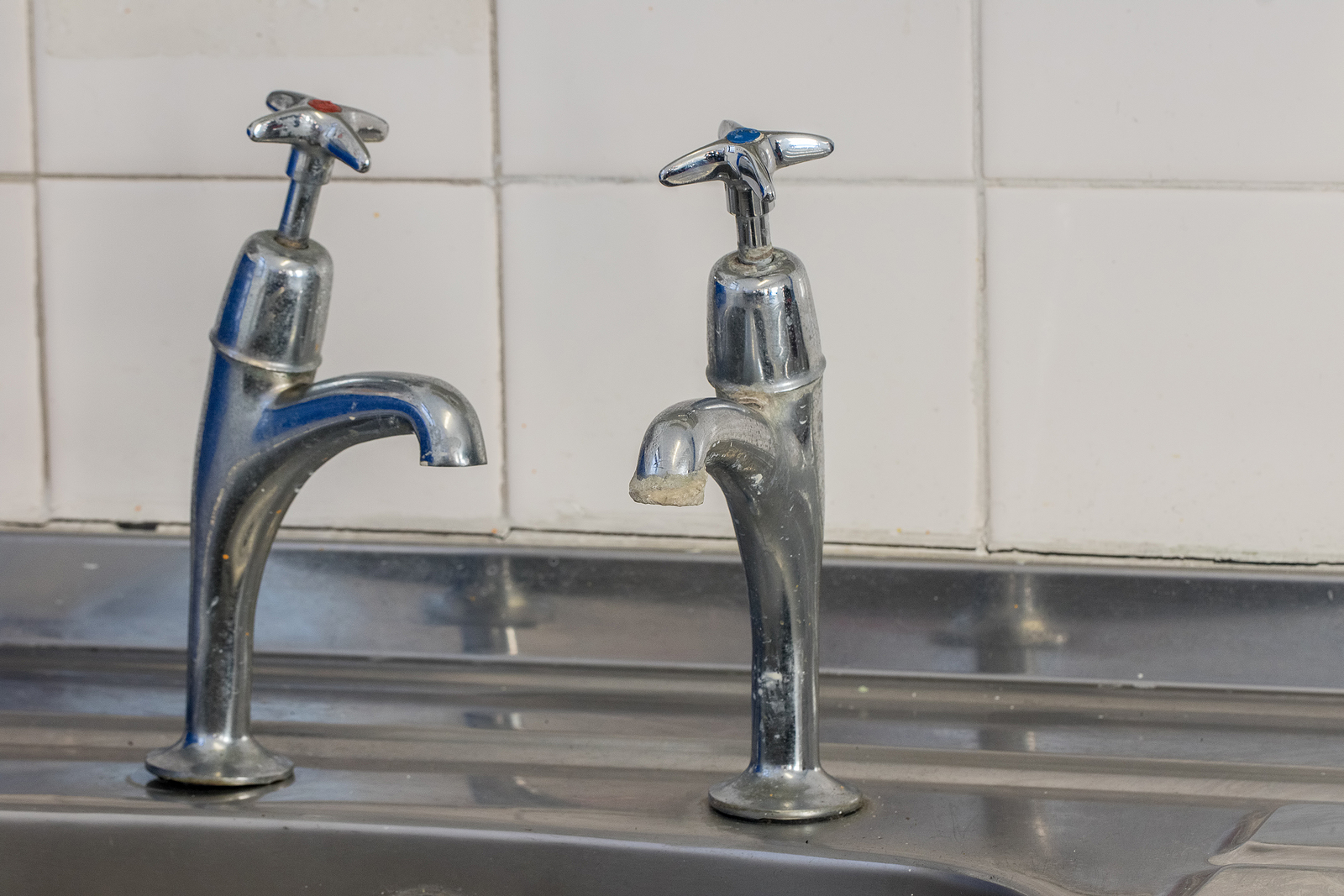
You rinse a dish and set it in the sink. Hours later, faint white marks start to appear where the water dried. That’s hard water at work. Stainless steel makes every streak and spot stand out. When minerals like calcium and magnesium are left behind, you see cloudy lines around the drain or soap dispenser.
Those stains collect fastest where water sits longest. Kitchens lose their shine, even with regular cleaning. It feels like a losing battle. Knowing how these stains form is the first step.
With the right routine, you can keep your sink bright and avoid stubborn buildup.
Anyone who has ever owned a stainless steel appliance or sink knows that it’s not really stainless. Spots, smears, blotches, and more appear with astonishing regularity. Luckily, you can shine up your stainless steel with natural remedies that you probably already have on hand.
A few simple stainless steel cleaners you can use include:
Let’s look at each of these and how you can use them to remove hard water spots.
Distilled white vinegar is one of the cheapest and most effective agents you can use to clean many areas of your home, including a stainless steel sink. To remove hard water stains with vinegar, you’ll need to:
This should leave your sink sparkling clean.
Vinegar works especially well for water stains on stainless steel because it breaks down mineral deposits like calcium and magnesium, the usual culprits behind hard water marks on stainless steel. A quick spray-and-wipe can help prevent spots from becoming permanent fixtures in your kitchen.
If you don’t like the smell of vinegar, try a different, more scent-friendly solution.
Pure lemon juice is also more acidic than vinegar and may be more effective at removing tough stains. You’ll use the same process as you would for vinegar, and will be left with a fresh, clean, citrus aroma wafting through your kitchen.
Lemon’s natural acidity not only fights water stains on stainless steel but also leaves a streak-free shine. Using lemon is an easy, natural way to get water spots off stainless steel, no harsh chemicals needed.
Like vinegar, baking soda is the natural housekeeper’s best friend. It’s useful for countless applications, including hard water stain and limescale removal. The steps for using baking soda include:
This method can help remove tough, hard water residue without damage to your sink.
Baking soda acts as a gentle abrasive, so it’s excellent for tackling hard water marks on stainless steel while keeping the finish smooth. It’s especially handy for those stubborn stains that water alone can’t budge.
If you have particularly stubborn hard water stains on your stainless steel sink, you can combine natural cleaning agents to make a more powerful cleanser. The most common is an acid and baking soda. For this method, you’ll need to begin with a rinse of the sink. Then you should:
Alternatively, you can use cream of tartar instead of baking soda. This method should remove even the most stubborn stains. Plus, it costs you very little money and is non-toxic. This is also one of the ways on how to get hard spots off the car.
Combining baking soda with an acid like vinegar or lemon creates a fizzy reaction that lifts and dissolves water stains on stainless steel quickly. If you’re wondering how to get water spots off stainless steel without scratching the surface, this combo is safe, affordable, and leaves your sink looking spotless.

Club soda isn’t only for cocktails. When water stains on stainless steel refuse to budge, a club soda rinse can restore that mirror shine.
Pour a generous splash of club soda directly onto your sink.
Let the bubbles work for a minute or two, then grab a clean microfiber cloth. Wipe in the direction of the steel’s grain.The carbonation helps lift away hard water marks on stainless steel and leaves behind a sparkling finish.
Finish by buffing with a dry cloth to lock in the shine and keep spots at bay.
When you want to give your stainless steel that show-stopping gleam, reach for olive oil or baby oil.
After you’ve tackled the water stains on stainless steel, put a small amount of oil on a soft microfiber cloth. Buff the surface lightly, moving with the grain. The oil forms a thin, protective layer that helps repel new water spots.
It also hides any lingering hard water marks on stainless steel and brings out a deep, rich shine.
Use a fresh cloth for a final polish. This method is gentle, non-toxic, and gives your sink a professional look, every single day.
Sometimes, stubborn water stains on stainless steel need a little extra muscle.
Bar Keepers Friend and similar stainless steel cleaners are made for these moments. Sprinkle a small amount onto a wet sponge, and gently rub the affected areas. Work with the grain to avoid dulling the finish.
Rinse thoroughly to remove any residue, then dry with a microfiber towel.
These products break down hard water marks on stainless steel and tackle stains that homemade solutions can’t handle.
When vinegar and lemon don’t cut it, commercial cleaners provide a reliable, safe option. Just always follow the manufacturer’s directions for best results.
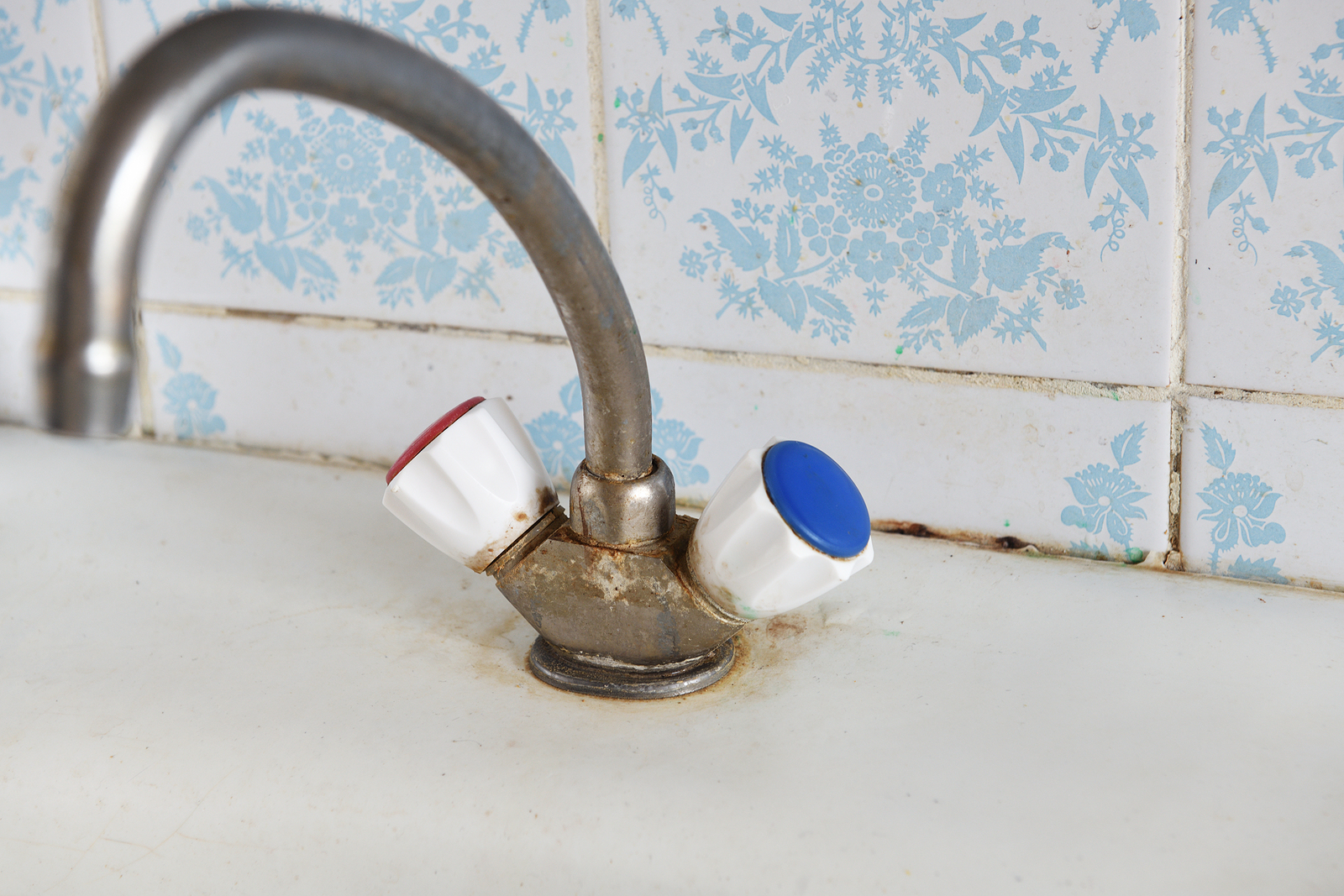
Scrubbing hard water stains with steel wool might seem like the quickest fix, but it often leaves your stainless steel sink worse off. Those abrasive pads create fine scratches, inviting even more buildup and dulling the surface.
Choosing a softer approach pays off. A microfiber cloth or soft sponge removes stains without harming the metal. Each gentle wipe protects the sink’s smooth finish.
In the end, patience and the right tool make the difference. Your sink keeps its shine, stays easy to clean, and stands up to daily use without losing its sparkle.
Look closely at your stainless steel sink and you’ll see faint lines running in one direction. That’s the grain. When you clean against it, stains get harder to lift and scratches start to collect.
Tiny marks dull the finish and give hard water stains a place to settle. The solution is simple. Wipe with the grain using a soft sponge or cloth. This gentle technique helps keep the metal polished and prevents new spots from forming.
A little attention to detail brings back the shine. Clean along the grain and enjoy a sink that always looks its best.
After a good scrub, it’s easy to walk away and let your sink air dry. But every drop left behind is a chance for hard water marks to take hold. These stains build up quietly and soon make the surface look tired.
Drying your sink with a microfiber cloth gives it an extra level of care. It prevents stains, preserves shine, and rewards your cleaning effort. Consistency matters.
Make drying part of your routine and enjoy the payoff every time you step into your kitchen..
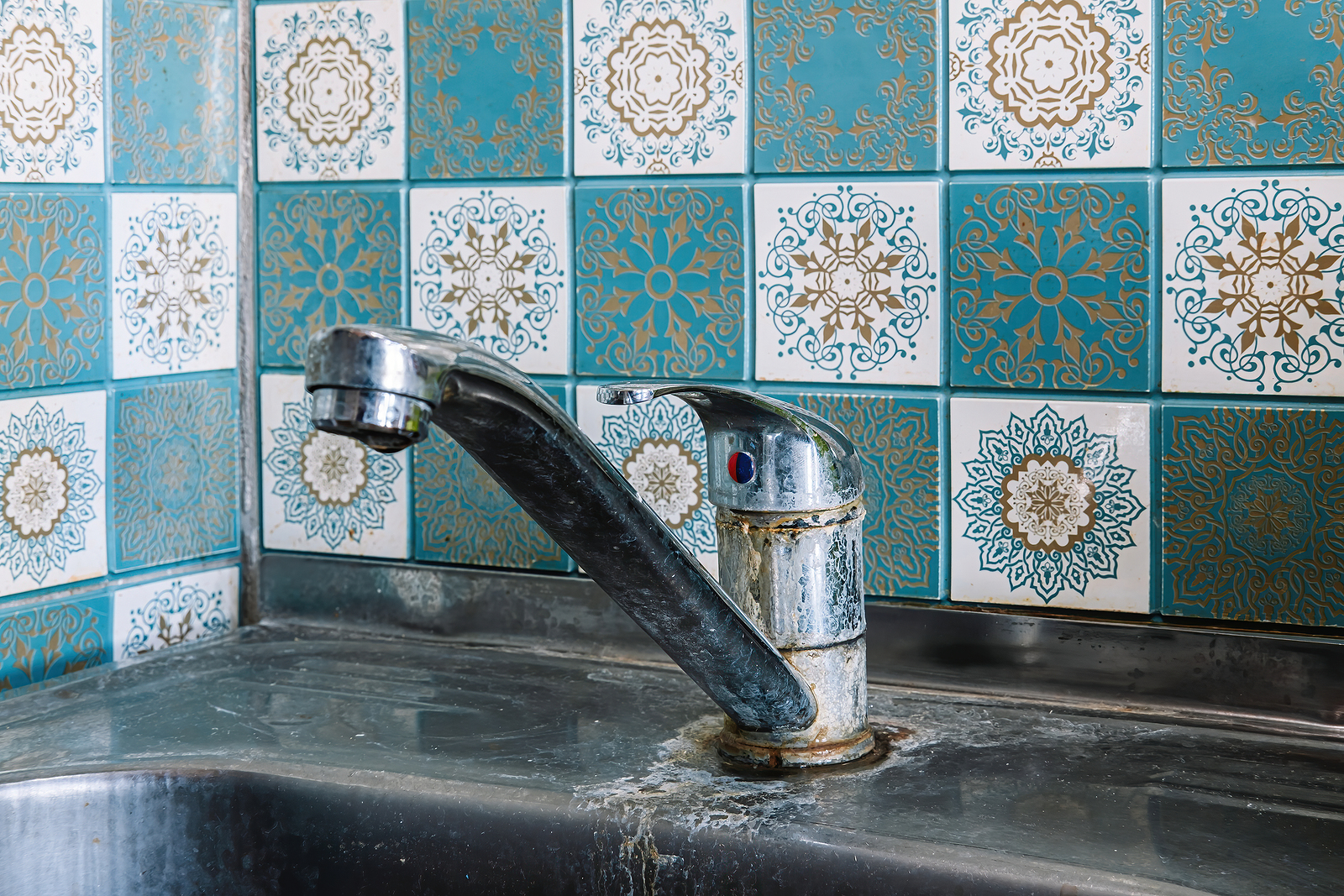
Those water stains on stainless steel are more than surface-level.
Over time, they can set the stage for oxidation and rust, threatening the shine and integrity of your sink. Calcium and magnesium deposits aren’t simply an eyesore; when left untreated, these hard water marks on stainless steel attract grime and moisture.
Stubborn spots turn into dull patches, and dull patches can eventually lead to pitting.
This is about hygiene, too. Food particles and bacteria cling to mineral build-up, making regular cleaning essential.
Removing stains helps your sink stay sparkling and extends its lifespan while also keeping your kitchen healthier. Knowing how to get water spots off stainless steel protects both your investment and your peace of mind.
Every polish brings back the brilliance and keeps your kitchen looking fresh, meal after meal.
Every time you use your sink, you set the stage for water stains on stainless steel to appear.
Don’t give hard water marks a chance. Keep a towel handy. With a quick wipe after rinsing dishes or washing your hands, you whisk away lingering droplets before they evaporate.
This small daily habit keeps your sink clear of mineral deposits.
No more unsightly streaks. No more dull spots that build up over time. Prevention is easier than constant scrubbing, and it only takes seconds.
A few swipes, and you’ve already started protecting your kitchen’s sparkle.
The tool you choose matters. Regular towels can leave lint and even scratch the surface, making stainless steel look tired. A microfiber cloth is the secret to that gleaming finish. Its soft fibers lift away residue and water without leaving a trace behind.
Use a dry microfiber cloth after every wash, and you’ll see the difference right away. The shine lasts. The surface stays smooth. This simple switch elevates your cleaning routine and keeps water stains on stainless steel at bay.
Sometimes, prevention means tackling the issue at its origin. Hard water marks on stainless steel usually start with minerals in your tap.
Installing a water softener can dramatically cut down on the minerals responsible for spots and buildup. With a Rayne Water system, you take control of your home’s water quality. These systems reduce calcium and magnesium content before the water even reaches your sink. Softer water means fewer stains, less cleaning, and a brighter kitchen.
It’s an investment that pays you back every day, one spotless sink at a time. Want to know how to get water spots off stainless steel for good? This step might be the answer.
When water stains on stainless steel keep coming back, a real solution starts at the source.
A water softener from Rayne Water removes calcium and magnesium ions, the minerals that cause hard water marks on stainless steel.
The process swaps those minerals for sodium or potassium, leaving your water gentle on surfaces. With softer water, stains don’t stand a chance. Sinks stay brighter, and you’ll spend less time polishing and more time enjoying your kitchen.
Over time, you’ll notice fewer spots and easier cleaning. It’s a quiet, constant defense that makes a visible difference every single day.
Softened water does a lot for your home. It’s not only about keeping stainless steel spotless.
Appliances like dishwashers and washing machines run better, last longer, and stay free from scale buildup. You’ll feel it too. Softer water means silkier hair and smoother skin after every shower.
Laundry comes out softer, and colors stay truer. Every faucet and fixture in your home benefits.
The savings add up, and your whole house feels fresher. Suddenly, those hard water marks on stainless steel are a thing of the past, and so are countless other household headaches.
There’s a moment when you pause, looking at yet another water spot on the sink, and wonder if it could be different. Rayne Water has helped homeowners turn that moment into lasting change.
We believe every family deserves water they can trust every day. It starts with understanding your challenges, then building a solution that actually fits. You feel the difference not just in the water, but in the care you get. Our team handles the details, including installation, support, and guidance along the way.
Soon, clean water becomes part of your routine, and stains become a thing of the past. Rayne Water makes the choice simple every time.
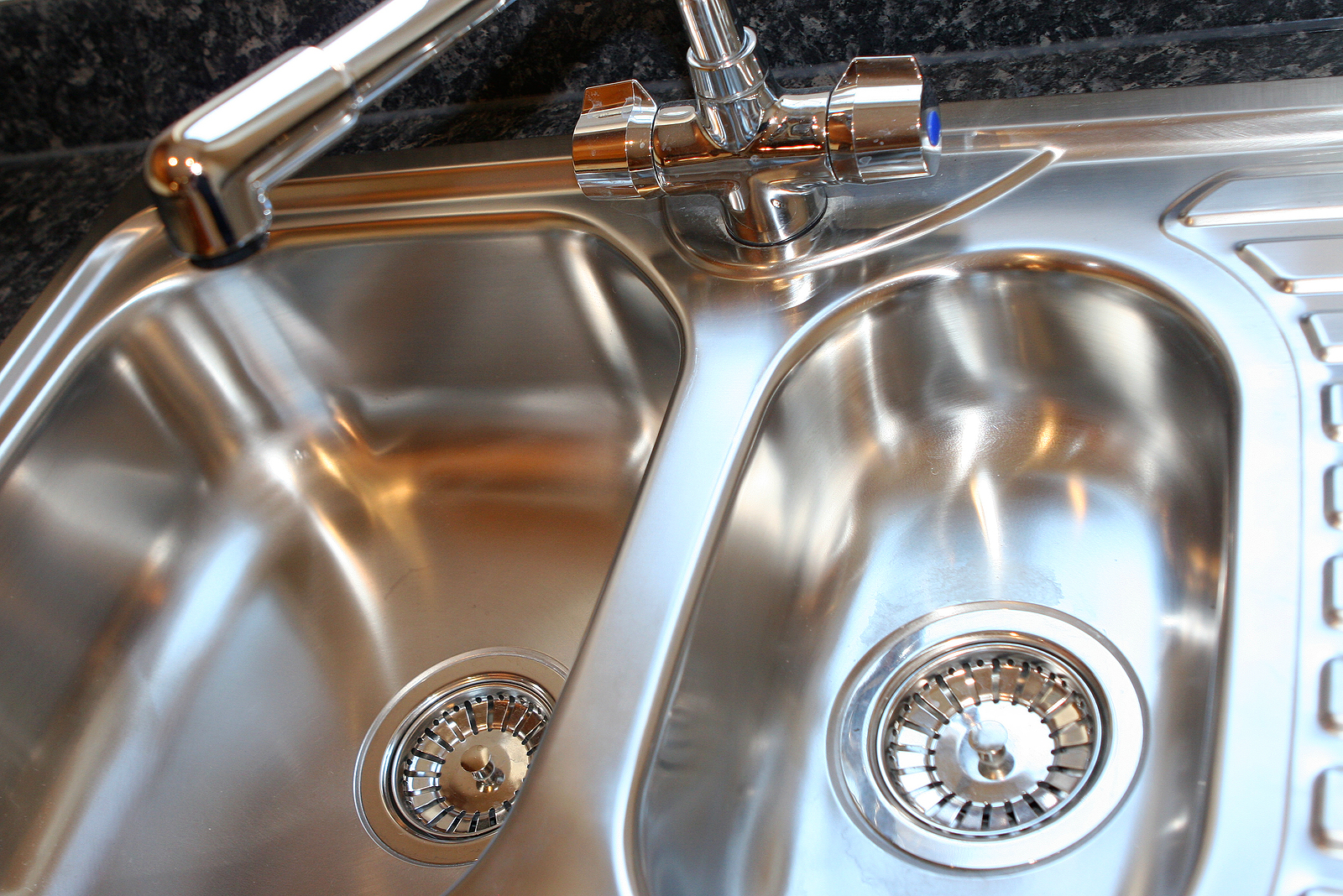
Those white water stains don’t need to win. A splash of vinegar or a quick rub with baking soda brings back that stainless shine. You might even try a bit of club soda or olive oil for a finishing touch.
Of course, prevention is the real game-changer. Keep a soft cloth nearby and wipe your sink dry after each use. These small steps help protect your kitchen’s look.
If you’re ready for a lasting fix, a water softener tackles the issue at the source. Rayne Water can help you find the right answer, so stubborn stains become a thing of the past.
What causes water stains on stainless steel sinks?
Water stains on stainless steel are typically caused by hard water. When water containing high levels of calcium and magnesium evaporates, it leaves behind white, chalky mineral deposits. These hard water marks dull the sink’s finish and become harder to remove over time, especially in areas where water tends to sit, like around drains and faucets.
What is the best natural way to remove hard water stains from a stainless steel sink?
Vinegar, lemon juice, and baking soda are all excellent natural cleaners for removing hard water stains. Vinegar breaks down mineral deposits, lemon leaves a fresh scent and streak-free shine, and baking soda acts as a gentle abrasive. For tougher stains, combining an acid like vinegar or lemon with baking soda can create a fizzing reaction that lifts away buildup safely.
How can I prevent water stains from coming back?
The best way to prevent hard water stains on stainless steel is to tackle the issue at its source. Wiping your sink dry after each use helps minimize mineral residue, and using a microfiber cloth prevents scratching. For a long-term solution, installing a water softener reduces the calcium and magnesium that cause stains in the first place, making your cleaning routine easier and your sink sparkle longer.
Sources:
